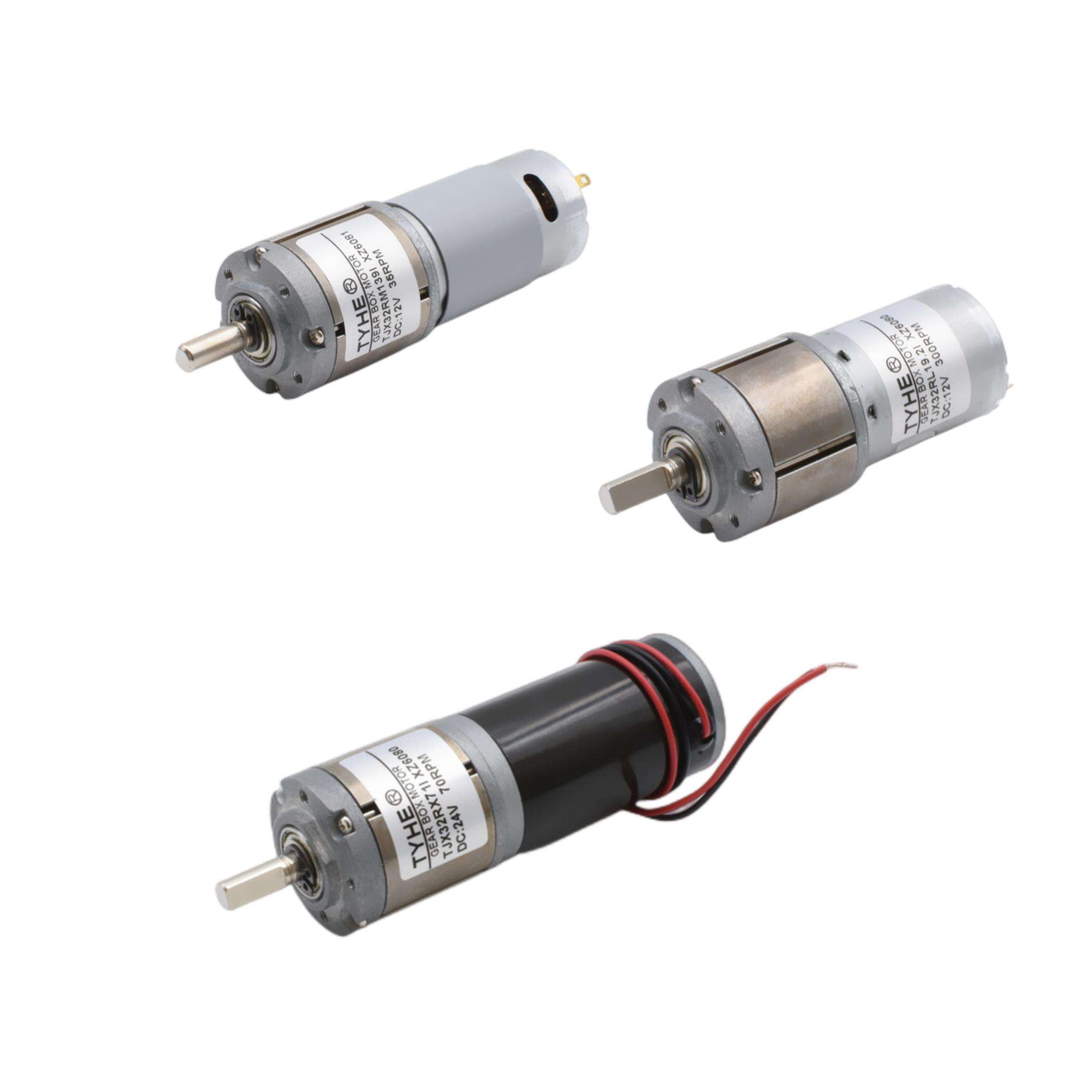Understanding High-Speed DC Motor Performance and Thermal Management
DC motors represent a cornerstone of modern machinery, capable of achieving remarkable speeds under the right conditions. The quest for higher rotational speeds, particularly reaching the 10,000 RPM threshold, requires careful consideration of thermal management and design principles. While many assume forced air cooling is mandatory for such high speeds, the reality is more nuanced and depends on various critical factors that influence motor performance and heat dissipation.
The relationship between motor speed, heat generation, and cooling requirements forms a complex interplay that engineers must carefully balance. Natural cooling methods, when properly implemented, can sometimes eliminate the need for forced air systems, leading to simpler and more cost-effective motor designs. Understanding these dynamics is crucial for anyone working with high-speed dc motor applications.
Core Factors Affecting DC Motor Speed and Temperature
Heat Generation Sources in DC Motors
Heat generation in dc motors primarily stems from several sources. The most significant contributor is I²R losses in the armature windings, where electrical current flowing through the conductor's resistance generates heat. Additional heat sources include friction in bearings, brush contact resistance, and iron losses in the magnetic core. At higher speeds, windage losses also become a considerable factor, as the rotor's movement creates air resistance that converts mechanical energy into heat.
The cumulative effect of these heat sources becomes more pronounced as motor speed increases. Without proper thermal management, the motor's temperature can rise rapidly, potentially leading to reduced performance or damage to critical components.
Natural Cooling Mechanisms
Natural cooling in dc motors occurs through three primary mechanisms: conduction, convection, and radiation. Conduction transfers heat through direct contact between motor components and the housing. Natural convection allows heated air to rise and be replaced by cooler air, creating a passive cooling flow. Radiation enables heat transfer through electromagnetic waves, though this typically accounts for a smaller portion of overall cooling.
The effectiveness of natural cooling depends heavily on the motor's design, including housing material selection, surface area optimization, and internal thermal pathways. Strategic placement of cooling fins and careful consideration of air flow patterns can significantly enhance natural cooling efficiency.

Design Considerations for High-Speed Operation
Motor Construction and Materials
Achieving 10,000 RPM without forced cooling requires careful attention to motor construction and material selection. High-grade electrical steel laminations help reduce core losses, while premium copper windings with superior insulation can better withstand elevated temperatures. Advanced bearing systems, such as ceramic or hybrid designs, generate less friction heat and can maintain stability at high speeds.
The motor housing plays a crucial role in heat dissipation. Materials with high thermal conductivity, such as aluminum alloys, effectively transfer heat from internal components to the outer surface. Surface treatments and specialized coatings can further enhance the housing's heat dissipation properties.
Thermal Management Features
Innovative thermal management features can significantly improve a dc motor's ability to operate at high speeds without forced cooling. Internal air channels designed to promote natural convection can create effective passive cooling circuits. Strategic placement of thermal sensors enables precise temperature monitoring and control.
Advanced thermal modeling and simulation tools allow engineers to optimize motor designs for maximum heat dissipation. These tools help identify potential hot spots and guide the implementation of passive cooling solutions, such as enhanced surface area designs or improved thermal interfaces.
Operational Strategies for High-Speed Success
Speed Control and Duty Cycle Management
Successful high-speed operation often requires sophisticated speed control strategies. Implementing proper acceleration and deceleration profiles helps manage heat generation during speed transitions. Variable speed drives with advanced control algorithms can optimize motor performance while maintaining acceptable temperature levels.
Duty cycle management becomes crucial when operating at high speeds without forced cooling. Alternating between high-speed operation and cooling periods allows natural cooling mechanisms to maintain safe operating temperatures. Intelligent control systems can automatically adjust operating parameters based on temperature feedback.
Environmental Considerations
The ambient environment significantly impacts a dc motor's ability to achieve and maintain high speeds without forced cooling. Proper ventilation around the motor installation ensures adequate air circulation for natural cooling. Ambient temperature, humidity, and altitude all affect cooling efficiency and must be considered in the application design.
Strategic motor placement within the larger system can maximize exposure to natural air currents and minimize heat accumulation. Avoiding enclosed spaces or providing adequate ventilation openings helps maintain effective natural cooling.
Frequently Asked Questions
What are the main limitations for DC motors reaching 10,000 RPM?
The primary limitations include heat generation, mechanical stress on components, bearing capabilities, and commutation efficiency. However, with proper design and thermal management, these challenges can be overcome without requiring forced air cooling.
How does ambient temperature affect high-speed DC motor performance?
Ambient temperature directly impacts the motor's ability to dissipate heat through natural cooling. Higher ambient temperatures reduce the temperature differential available for cooling, potentially limiting the maximum sustainable speed without forced cooling.
What role do bearings play in high-speed DC motor operation?
Bearings are crucial for high-speed operation as they must maintain stability while generating minimal friction heat. High-quality bearings with proper lubrication and design can support 10,000 RPM operation while contributing minimally to the overall heat load.


